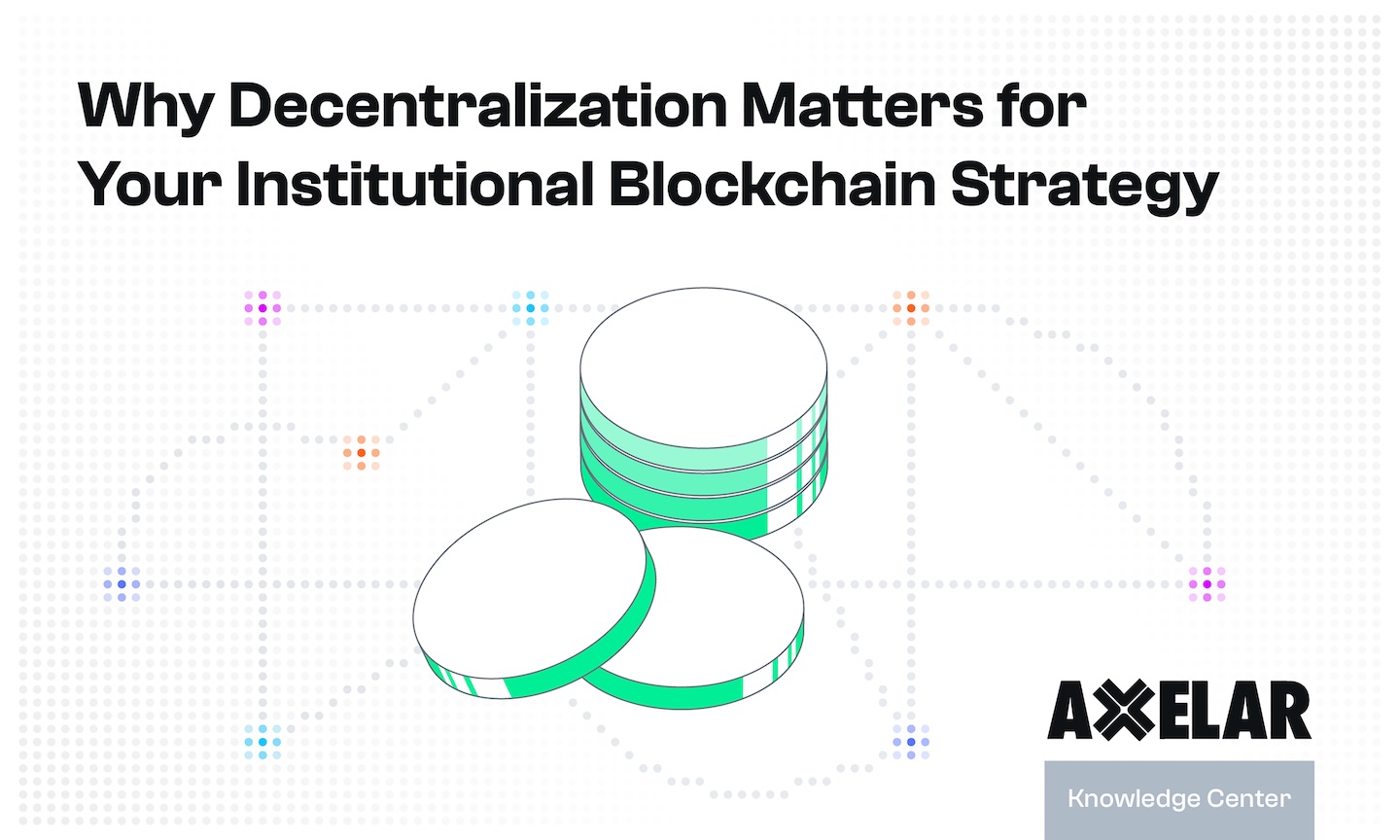Why Decentralization Matters for Your Institutional Blockchain Strategy
Table of Contents

%20small.jpg)
Institutional adoption of blockchain is no longer theoretical; it’s accelerating. A global survey by Coinbase and EY-Parthenon of more than 350 institutional investors found that 83% plan to expand their digital asset allocations in 2025, with nearly 60% preparing to commit over 5% of AUM. And unlike past cycles, this wave goes beyond Bitcoin and Ethereum: firms are exploring stablecoins, DeFi, tokenized funds, and real-world assets on public blockchains.
This shift is reshaping market infrastructure. Banks, asset managers, and custodians are launching blockchain-based products; regulators are outlining clearer frameworks; and hybrid models that combine permissioned control with public blockchain liquidity are emerging.
Why Decentralization Matters for Your Institutional Blockchain Strategy explains the strategic architecture behind that evolution, and why decentralized, non-custodial interoperability is poised to become the backbone of institutional blockchain systems. It explores:
- How decentralization functions on a spectrum, and why different institutions are operating across it.
- Why composability is becoming a defining design principle of financial market infrastructure.
- How real pilots from Citi, JPMorgan, Goldman Sachs and Euroclear point to a future of scalable hybrid operating models.
- The cost, liquidity, and efficiency advantages institutions are pursuing by tapping into public blockchain networks.
Fill out the form to download the full report and get an in-depth look at the technical and strategic foundations shaping the next phase of onchain institutional finance.


